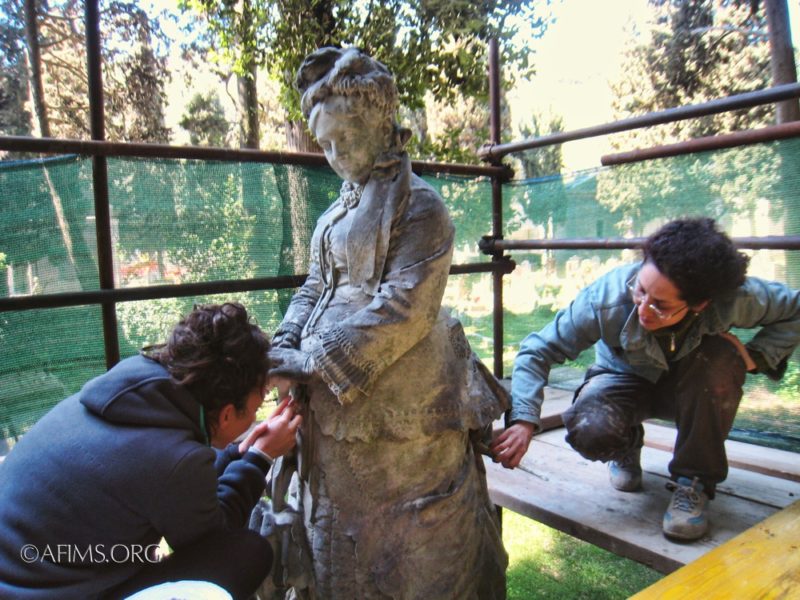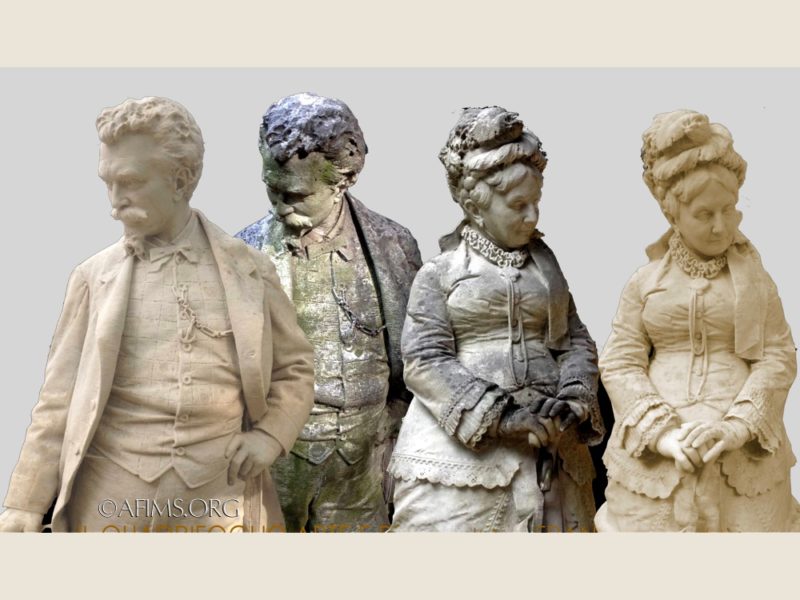How are these masterpieces restored?

Cleaning Julia Morison Bentley

The Berthe Grosso Bonnin Memorial

The Bentley and Whitehead memorials
There were many steps in the restoration process.
We start with specifications written by art restoration specialists from the Provincial department that oversees the art work, the Soprintendenza Per I Beni Architettonici E Paesaggistici Della Liguria. We issue a request for proposals to 5 or 6 different restoration firms with experience in this type of work, and select the most appropriate proposal. While price is a factor in the selection, we also need to ensure the chosen proposal is thorough, thoughtful and complete.
Typically work will begin with lightly brushing off dust and debris, then cleaning with cotton swabs and deionized water. Some areas are then gently washed with mild detergents, and poultices with biocides (one commonly used type is ammonia quaternario) are applied to draw out the microorganisms. The poultice also serves to desalinize the surface. Cracks and flaking may be consolidated with ethyl silicates, and some areas are repaired or reinforced with either a mix of plaster and marble dust or resin and marble dust. The final stage is application of a Water repellent sealer, which is non permanent; it has a two year lifespan. We plan a follow-up with a light cleaning and reapplication of the sealer.
In some cases, like the Fletcher Memorial by Luigi Brizzolara, a laser is used for some of the cleaning. The laser is calibrated to the exact wavelength that causes the dirt to come off without the device touching or harming the marble. This is a very good, but slow and difficult technique, appropriate in specific cases. Calibration entails taking micro photographs and analyzing them in the lab.